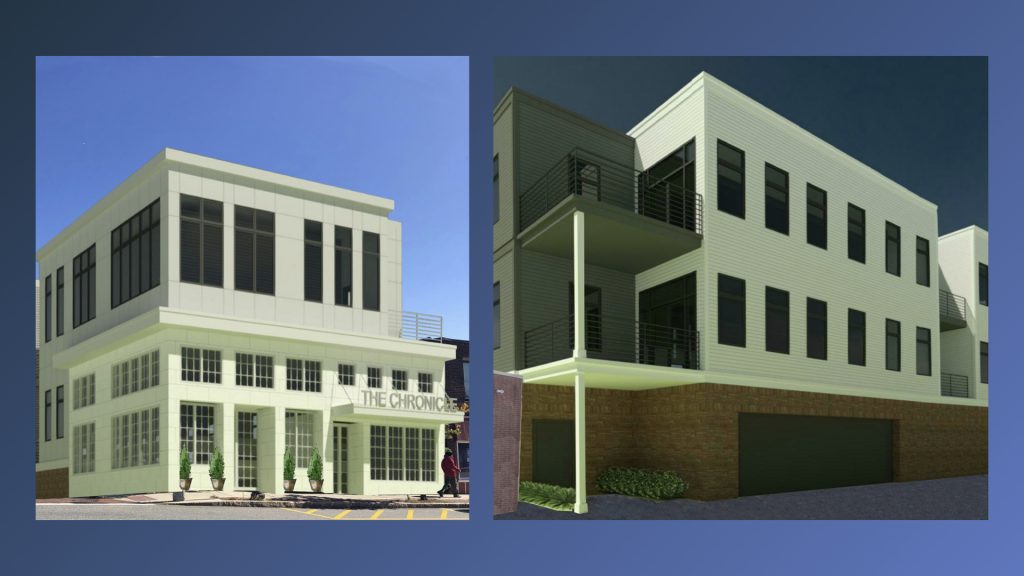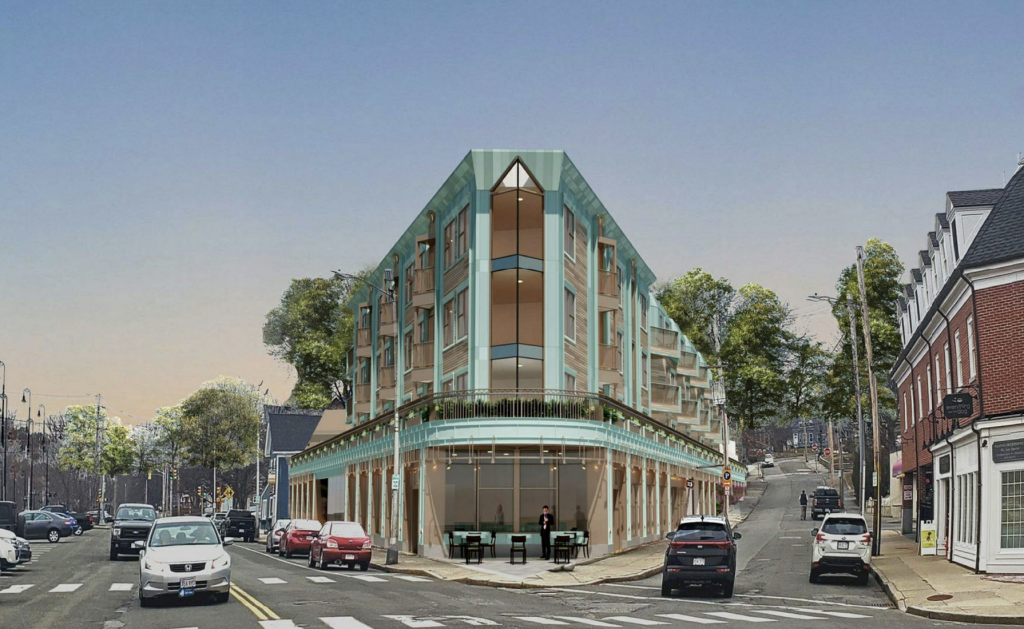Reading, MA — By a vote of 5-0, the Community Planning and Development Commission (CPDC) approved major plan changes to the previously approved 40R development at 531 Main Street, the former site of the Reading Chronicle building. Speaking for the developer, Attorney Chris Latham explained that the Reading Municipal Light Department had determined that no transformer was needed for the proposed building, which freed up space in the northeast corner of the building. Additionally, according to Latham, the developer is determined to create a building that is fossil-fuel free, eliminating the need for gas meters and for a “tunnel” space at the rear of the building to house them.

Latham shared that these updates have allowed for some interior changes in the building, including moving the garage door six feet to the east and the addition of a parking space in the building’s garage. The two apartments on the northeast corner will now have slightly more space that will allow for larger balconies for those two apartments. Latham also indicated that there would be a reduction of illumination from the area where the gas meters were once located.
Abutter Jill Mayberry expressed concerns that the larger balconies would invite parties and other encroaching activities aimed at the abutting neighbors. CPDC member Nick Safina asked why no one shares this concern when single-family houses are built. CPDC John Weston suggested that screening on the balconies could alleviate this issue. The Reading Square Auto Body shop owner, which is directly adjacent to the proposed development, shared concerns about how close the two buildings will be once the new structure is built. Latham shared that the placement of the building is within current zoning bylaws.

CPDC also continued to review the proposed development at 6-16 Chute Street. The current building on the 17,986 square-foot site, which was built in 1974, is a one-story commercial building that houses several businesses, including the Last Corner Restaurant, The Green Tomato, and a laundromat.
The proposed building would create two commercial spaces on the first floor facing High Street with an enclosed parking garage, to be used by residents, also on the first floor. The garage would be accessed via a Chute Street entrance. Project Architect Jeffrey Olinger explained that the upper three floors would now house 29 apartments, reduced from 31. Seven of those apartments would be designated as “affordable.” This is now below the 25 percent threshold of affordable apartments needed to designate all the apartments as part of the town’s affordable inventory. The change also reduces the density of the building to seventy units per acre.
Attorney Josh Latham, speaking for the developer, argued that this building is “an ideal use for this parcel,” highlighting its proximity to the train station, and also suggested that the two retail spaces would “activate” portions of High Street for pedestrians.
Latham continued, sharing that the building would create over $230,000 in fee revenues for the town, up to $275,900 in local economic impact annually, and generate an additional $82,000 of annual tax revenue. He also presented comparisons to other developments in the downtown that suggested that this building compared favorably to the density, retail space percentage, and floor area ratio of those projects.
“This project has the lowest density of any 40R with an affordable housing component,” Latham shared.
CPDC Tony D’Arezzo expressed disappointment in the changes. “We were looking for a change in the size of the building, not just in the number of units,” D’Arezzo explained. As presented, Latham said the project would give the developer a 5.26% rate of return on investment, which is less than the 6.37% suggested by the state as economically viable. “The developer takes a significant amount of risk,” Latham declared.
Safina continued, asking if there was any way to include one more affordable unit, allowing all twenty-nine to be counted toward the inventory. “It is a futile exercise to add 29 units if we cannot count them [as affordable],” Safina lamented.
CPDC continued the public hearing until March 14 at 8:30 pm.
CPDC also suggested changes to a proposed new sign for William Raveis Real Estate to be placed one the facade of the Latham Law office building at 643 Main Street. Sign designer Bryan Vasser was asked to revise the size of the new sign’s font and background and consider not illuminating the sign. The matter was rescheduled for March 14 at 9:30 pm. CPDC also voted 5-0 to release the lots at 135 Howard Street, the next step for the developer securing building permits.
CPDC adjourned just after midnight.
